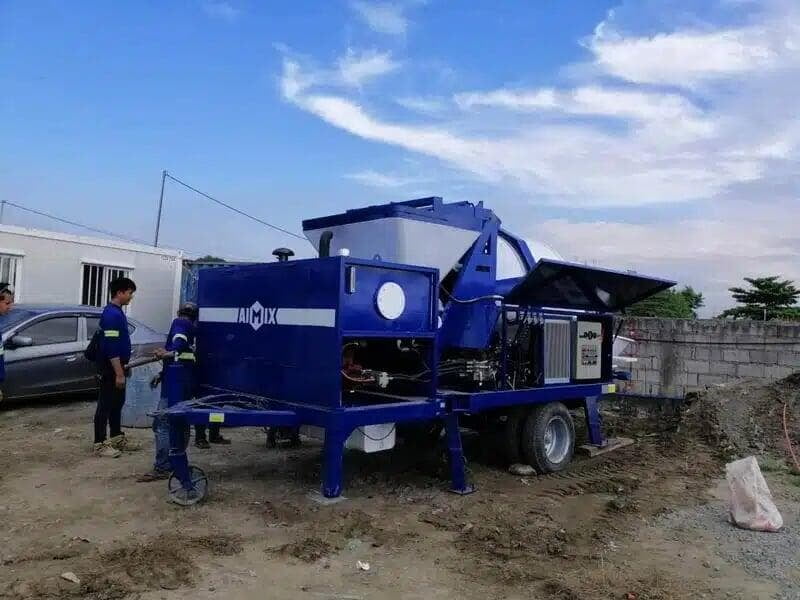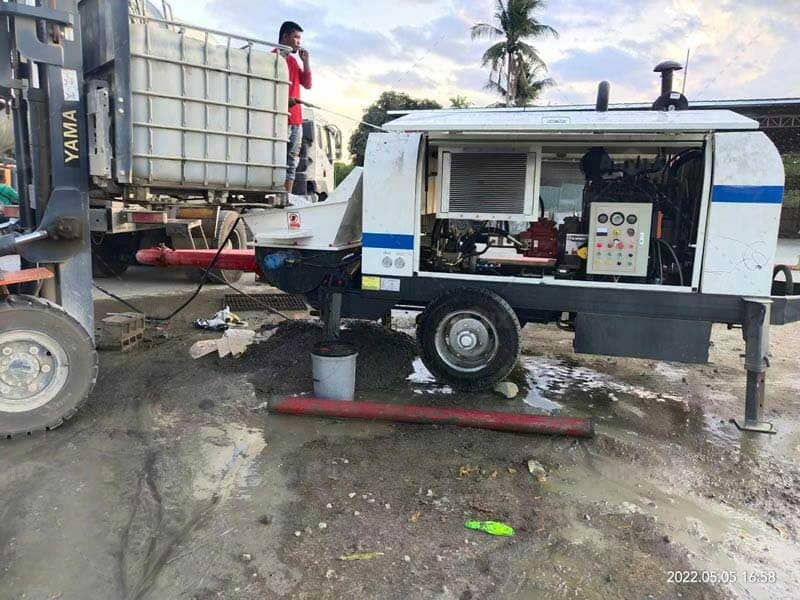A concrete mixing pump combines the functions of a concrete mixer and a concrete pump into a single machine. It is designed to mix concrete ingredients on-site and pump the mixed concrete to the desired location, eliminating the need for separate mixing and pumping equipment. Concrete mixing pumps are commonly used in construction projects where space is limited, and mobility is essential, offering versatility and efficiency in concrete placement.
A line pump, also known as a trailer-mounted concrete pump, is a specialized machine used for pumping concrete through a system of pipes or hoses. Unlike a concrete mix pump, a line pump does not have mixing capabilities and is primarily used for transporting and placing ready-mixed concrete from a stationary mixer to the desired location. Line pumps are commonly used in larger construction projects where high-volume concrete placement is required.

Comparison of Features and Functionality

